Papers by Emmanuelle Meunier
Mines et atelier de réduction du fer à Briou/Goassélen (Le Cloître-St-Thégonnec & Berrien, Finistère). Un cas d'étude du projet ArchéoMétal-Armoricain (2024)
Bulletin de l'AFEAF, 2024
L’exploitation des ressources minières de l’espace pyrénéen au premier millénaire av. n. è.
L'Europe des matières premières au 1er millénaire av. n. è. Actes du 45e colloque de l'AFEAF, Gijón, 13-15 mai 2021, 2023
Plusieurs projets de recherche menés ces vingt dernières années ont concerné l’exploitation des r... more Plusieurs projets de recherche menés ces vingt dernières années ont concerné l’exploitation des ressources minières dans un vaste domaine
pyrénéen, étendu jusqu’au Priorat vers le sud et jusqu’à la Montagne Noire vers le nord. Nous présentons ici un bilan des connaissances acquises
dans cet espace sur les mines et la métallurgie primaire du 1er Millénaire av. n. è. ainsi que les éléments disponibles pour évaluer l’importance de
ces productions.
La distribution du métal issu des mines de l’Arize : éléments de discussion à partir des amphores
L'Europe des matières premières au 1er millénaire av. n. è. Actes du 45e colloque de l'AFEAF, Gijón, 13-15 mai 2021, 2023
Le district à cuivre argentifère du Massif de l’Arize (Ariège) a été exploité entre le IVe siècle... more Le district à cuivre argentifère du Massif de l’Arize (Ariège) a été exploité entre le IVe siècle av. n. è. et la période augustéenne, puis au XIVe siècle.
Pour le Second âge du Fer, l’ampleur de certains des réseaux miniers montre que la production devait dépasser les besoin locaux. Le mobilier
amphorique témoigne de son insertion dans les réseaux d’échanges régionaux, et ce dès le IIIe siècle av. n. è.
Tin production in NW Iberia during the first millennium BC: some insights from the IberianTin project
L'Europe des matières premières au 1er millénaire av. n. è. Actes du 45e colloque de l'AFEAF, Gijón, 13-15 mai 2021, 2023
We present three sites in NW Iberia with examples of archaeological material related with tin min... more We present three sites in NW Iberia with examples of archaeological material related with tin mining and metallurgy attributed to the first millennium BC, studied in the frame of the IberianTin project.
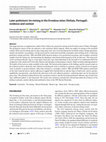
Archaeological and Anthropological Sciences, 2023
This paper presents a comprehensive study of the evidence for ancient tin mining at the Ervedosa ... more This paper presents a comprehensive study of the evidence for ancient tin mining at the Ervedosa mine (Vinhais, Portugal). The geological context of the site indicates a rich cassiterite (SnO2) deposit, which was subject to mining in the twentieth century. Some ancient mining and ore processing stone tools were recovered during the twentieth century mining operations, namely one hammer, one pounder, one flat anvil and five small tools used both as pounders and crushing anvils, evidencing prehistoric mining activities. XRF and SEM–EDS chemical analyses were performed on primary and secondary cassiterite samples from the mining site, demonstrating the abundance and chemical heterogeneity of the tin (Sn) ores. The stone tools can be ascribed to Bronze Age or, at the latest, Early Iron Age (2nd millennium to the first half of 1st millennium BCE) by comparison with similar tools from other Iberian and European archaeological contexts. High-resolution photogrammetric 3D models of the tools are made available in this study. The historical descriptions of the findings and the research made on the technical archives about the mine allowed correlating the tools to mining in a primary context, focused on rich quartz veins in granitic or greisen bedrock, rather than mining in a secondary context. XRF and SEM–EDS analyses performed on the stone material and on surface adherences support their identification as specific types of hard rocks, such as granite, amphibolite and quartzite, and allowed the detection of Sn-rich adherent particles, confirming their use for Sn-material processing. The potential relation between the cassiterite resources and the local later prehistoric (Bronze Age to Early Iron Age) settlement pattern is also discussed. The results raise awareness and provide relevant data about the existence of tin mining in primary contexts during later prehistoric times in the NW Iberian Peninsula.
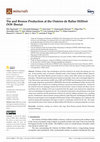
Minerals, 2022
Findings of Iron Age metallurgical activities related to tin metal and mining are very rare. In t... more Findings of Iron Age metallurgical activities related to tin metal and mining are very rare. In the present work, we present a detailed study of the Outeiro de Baltar hillfort, dated to the Late Iron Age/Early Roman period, located in a place where 20th century tin mining work took place. Elemental and microstructural analysis by portable, micro and wavelength dispersive X-ray fluorescence spectrometry (pXRF, micro-XRF and WDXRF) and scanning electron microscopy with energy dispersion spectrometer (SEM-EDS) showed that metallurgical debris found at the archaeological site is related to tin smelting and binary and ternary bronze productions. Analysis of the artefacts of diverse typologies found at the site showed that a variety of metals and alloys were in circulation and use. Samples of tin ores (cassiterite) from the region were analyzed for comparison with an archaeological tin slag from the site. The analytical results point to the production of tin metal using local cassiterite and the production of bronze by directly adding cassiterite into a smelting process. Furthermore, data of remote sensing (airborne Light Detection and Ranging (LiDAR) and historical aerial imagery) and Geographical Information System (GIS) mapping were combined with archival mining documentation and maps to retrieve a landscape context for the site. The study showed that the place of the Outeiro de Baltar hillfort (NW Iberia) was mined periodically over time.
Dias et al, 2019
No sítio de As Muradellas, Espanha, encontrou-se uma escória composta essencialmente por estanho ... more No sítio de As Muradellas, Espanha, encontrou-se uma escória composta essencialmente por estanho (Sn) e tungsténio (W) duma possível plataforma de processamento metalúrgico que, juntamente com os teores de Sn analisados em sedimentos colhidos in situ, sugere, embora sem absoluta certeza, que este local terá sido minerado para o estanho na antiguidade. Atualmente sabe-se muito pouco sobre o impacto que a cassiterite (SnO2) ibérica teve na produção de estanho no ocidente europeu durante o período pré-industrial. Neste estudo, pretende-se apresentar um pouco do trabalho preliminar em curso no âmbito do projeto IberianTin, cujo objetivo é aumentar esse conhecimento através do estudo de antigas minas de estanho na Península Ibérica.
Meunier, E., 2021, « Contribution de l’archéologie minière à la connaissance des sociétés du seco... more Meunier, E., 2021, « Contribution de l’archéologie minière à la connaissance des sociétés du second âge du Fer du Sud-Ouest de la Gaule ». In : Adroit, S.,Bertaud, A., Le Dreff, T., Moulin, C., Poigt, T., Représenter la protohistoire / Se représenter à la protohistoire : Actes des IVe rencontres doctorales de l’École européenne de protohistoire de Bibracte, 12-13 mars 2018, pp. 137-143. https://halshs.archives-ouvertes.fr/halshs-03262380.
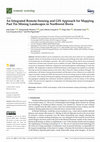
Remote Sensing, 2021
Northwest Iberia can be considered as one of the main areas where tin was exploited in antiquity.... more Northwest Iberia can be considered as one of the main areas where tin was exploited in antiquity. However, the location of ancient tin mining and metallurgy, their date and the intensity of tin production are still largely uncertain. The scale of mining activity and its socio-economical context have not been truly assessed, nor its evolution over time. With the present study, we intend to present an integrated, multiscale, multisensor and interdisciplinary methodology to tackle this problem. The integration of airborne LiDAR and historic aerial imagery has enabled us to identify and map ancient tin mining remains on the Tinto valley (Viana do Castelo, northern Portugal). The combination with historic mining documentation and literature review allowed us to confirm the impact of modern mining and define the best-preserved ancient mining areas for further archaeological research. After data processing and mapping, subsequent ground-truthing involved field survey and geological sampling that confirmed cassiterite exploitation as the key feature of the mining works. This non-invasive approach is of importance for informing future research and management of these landscapes.
This paper presents new data about the silver‐bearing copper mining area of the Arize (Central Py... more This paper presents new data about the silver‐bearing copper mining area of the Arize (Central Pyrenees) during the fourth and third centuries BC. The identification of amphorae sherds from Magna Graecia and the Strait of Gibraltar region sheds new light on this metal production and confirms a systematic exploration of the ores before the end of the third century BC. At a regional scale, the existence of several mines operating between the fourth and third centuries BC also suggests a production that exceeded the local needs. Parallels can be drawn between this important raw metal production and the socio‐economic changes observed in Celtic Europe in the same period. We also point out the need for further in‐depth study of the economic situation of this region, lying at a crossroads between the Celtic and Mediterranean worlds.
Actas IX Congresso Jovens Investigadores em Geociências, LEG 2019, 2019
No sítio de As Muradellas, Espanha, encontrou-se uma escória composta essencialmente por estanho ... more No sítio de As Muradellas, Espanha, encontrou-se uma escória composta essencialmente por estanho (Sn) e tungsténio (W) duma possível plataforma de processamento metalúrgico que, juntamente com os teores de Sn analisados em sedimentos colhidos in situ, sugere, embora sem absoluta certeza, que este local terá sido minerado para o estanho na antiguidade.
Atualmente sabe-se muito pouco sobre o impacto que a cassiterite (SnO2) ibérica teve na produção de estanho no ocidente europeu durante o período pré-industrial. Neste estudo, pretende-se apresentar um pouco do trabalho preliminar em curso no âmbito do projeto IberianTin, cujo objetivo é aumentar esse conhecimento através do estudo de antigas minas de estanho na Península Ibérica.
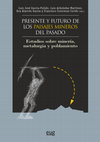
L.J. García- Pulido, L. Arboledas Martínez, E. Alarcón García y F. Contreras Cortés (Eds.), Presente y futuro de los paisajes mineros del pasado: estudios sobre minería, metalurgia y poblamiento, VIII Congreso sobre minería y metalurgia históricas en el sudoeste europeo, 2017
La mina de la rambla del Abenque (La Unión) pertenece al complejo minero de época romana de la Si... more La mina de la rambla del Abenque (La Unión) pertenece al complejo minero de época romana de la Sierra Minera de
Cartagena. Dos tipos de mineralización se han explotado: un filón de galena argentífera y unas estructuras con óxidos de hierro, que
dieron lugar a labores de aspecto muy distinto.
Basándose en los resultados de investigaciones recientes sobre minas antiguas realizadas por nuestro equipo en el Sur de Francia,
este trabajo plantea dos cuestiones principales: la posibilidad del uso del fuego para la extracción de la roca y la dificultad para
identificar fases de explotación que no sean romanas sin el uso de dataciones radiocarbónicas.
The mine of the rambla del Abenque (La Unión) belongs to the Roman mining complex of the Sierra Minera de Cartagena.
Two types of mineralization have been worked out: a silver-lead vein and some structures with iron oxides. They induced some
works with very different aspects.
Upon the base of the results of recent investigations about ancient mines performed by our team in Southern France, this work considers
two main questions: the possibility of using fire to extract the rock and the difficulty to identify other mining phases than the
Roman ones without using radiocarbon dating.
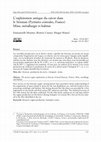
Meunier E., Cauuet B., Munoz, M. (2017), L’exploitation antique du cuivre dans le Séronais (Pyrén... more Meunier E., Cauuet B., Munoz, M. (2017), L’exploitation antique du cuivre dans le Séronais (Pyrénées centrales, France). Mine, métallurgie et habitat, in Treballs d’Arqueologia 21, p. 223-245.
Résumé: Les nouvelles prospections sur le district minier cuprifère du Séronais ont permis de mieux comprendre l’organisation de l’espace en relation avec les mines pour l’époque tardo-républicaine, avec la localisation d’ateliers de traitement du minerai et d’habitats. Mais les datations, réalisées sur des charbons issus des chantiers, ont montré que cette phase avait été précédée par une première exploitation dès les IVe et IIIe s. av. n. è., inconnue jusqu’alors. La reprise médiévale du XIVe s. a également été confirmée. D’autre part, les analyses sur le minerai et les scories permettent de confirmer la production de cuivre de ce district pour l’Antiquité (Ier s. av. n. è.), mais pas de l’argent identifié dans le minerai.
Resumen: Las nuevas prospecciones en el distrito minero cuprífero del Séronais han llevado a un mejor entendimiento de la organización del espacio en relación con la minas del periodo tardo-republicano, con la localización de talleres de tratamiento del mineral y de asentamientos. Pero las dataciones, realizadas sobre carbones procedentes de las labores mineras, han mostrado que ésta fase había sido precedida por una primera explotación ya durante los siglos IV y III aC, desconocida hasta ahora. La reactivación medieval del siglo XIV también se ha confirmado. Por otra parte, los análisis del mineral y de las escorias permiten confirmar la producción de cobre en este distrito para la Antigüedad (s. I aC) pero no de la plata identificada en el mineral.
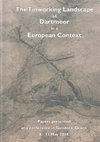
COMENDADOR REY, B., MEUNIER, E., FIGUEIREDO, E., LACKINGER, A., FONTE, J., FERNÁNDEZ FERNÁNDEZ, C... more COMENDADOR REY, B., MEUNIER, E., FIGUEIREDO, E., LACKINGER, A., FONTE, J., FERNÁNDEZ FERNÁNDEZ, C., LIMA, A., MIRÃO, J. et SILVA, R. J. C., 2017, « Northwestern Iberian Tin Mining from Bronze Age to Modern Times: an overview ». In : Newman, P. (Ed.), The Tinworking Landscape of Dartmoor in a European Context. Sowton, pp. 133-153.
The northwestern Iberian Peninsula has been well known for its mineral wealth since classical times, including for gold and for tin. In fact, the Iberian tin belt is the largest in western Europe (covering an area of c.200,000 km2), containing tin deposits that were accessible from ancient times. Nevertheless, few archaeological studies have been dedicated to ancient tin mining in the region, unlike gold mining, for which major mining complexes are known from Roman times (e.g. Las Médulas, N Spain, and Três Minas, N Portugal). In this paper, evidence for tin mining in different periods, from Bronze Age to modern times, is discussed, based on selected case-studies, using various approaches developed for the study of ancient and modern tin mining, by members of the present Iberian Tin Research Group. An introduction to the geographical and geological contexts of Iberian tin, and the history of investigation on Iberian tin mining, is included.
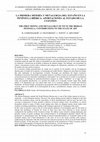
The Iberian Peninsula, namely the North-Western Iberian area, is one of the richest regions in ti... more The Iberian Peninsula, namely the North-Western Iberian area, is one of the richest regions in tin ores – cassiterite – in the European territory. However, the strong mining activity linked to tungsten in the first half of the twentieth century, and the coincidence of these mineralizations with tin ones, has led to the covering or destruction of many possible evidences of ancient mining works. Nevertheless, in written documents related to many of these recent mining sites, there are frequent reports about earlier local evidence of mining exploitations, leading to the frequent expression of "reopening of the mine". In this work we present a state of the art of the possible pathways of investigation open for the study of mining and metallurgy of Iberian tin. Some of these lines have been explored in recent research conducted by the members of the Cassiteros Group. We address issues related to mining landscapes and possible circuits of goods exchange, the existence/absence of metallurgical materials related with tin production in archaeological sites, the finding of ancient materials/artefacts in "reopened" mines in the twentieth century and a brief introduction to the issue of tin in the recent economy (XX century), emphasizing the importance that this metal may have played in ancient as well as in recent North-Western Iberian economy. At the same time, we present a proposal on the potential use of these resources, both in terms of the historiography of European pre and proto-history, as in the heritage sector.
L'exploitation de l'étain dans le NO ibérique entre l'Age du Bronze et la fin de l'Empire Romain. Mémoire de Master 2 sous la direction de Christian Rico. Université de Toulouse 2 Le Mirail (2011)
L'artisanat métallurgique antique en milieu urbain: le cas de Lucus Augusti (Lugo, Espagne). Mémoire de Master 1 dirigé par Christian Rico. Université de Toulouse 2 Le Mirail (2010)
Talks by Emmanuelle Meunier
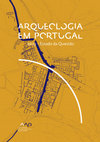
Arqueologia em Portugal 2023 - estado da questão, 2023
Elin Figueiredo, João Fonte, Emmanuelle Meunier, Sofia Serrano, Alexandra Rodrigues
Resumo: O... more Elin Figueiredo, João Fonte, Emmanuelle Meunier, Sofia Serrano, Alexandra Rodrigues
Resumo: O presente trabalho efetua um breve resumo sobre algumas atividades e resultados obtidos no âmbito de dois projetos de investigação, IberianTin e Gold.PT, parcialmente financiados pela Fundação para a Ciência e Tecnologia (FCT-MCTES), que incidem sobre mineração e metalurgia do estanho, bronze, ouro e prata no Oeste Peninsular durante a Proto-história. Foram investigados vários sítios arqueológicos e geológicos do território nacional e galego (Espanha), bem como coleções geológicas e metalúrgicas de vários museus. Foram também consultadas várias bases documentais, entre as quais se destacam os registos mineiros. Os projectos pretendem contribuir para bases mais sólidas sobre os processos metalúrgicos antigos, nomeadamente da Idade do Bronze e da Idade do Ferro, e a sua relação com recursos territoriais e economias antigas.
Abstract : This paper provides a brief summary of some activities and results obtained within the framework of two research projects, IberianTin and Gold.PT, which are partially funded by the Portuguese Foundation for Science and Technology (FCT-MCTES). The projects focus on the mining and metallurgy of tin, bronze, gold, and silver in the Western Iberian Peninsula during Protohistory. Several archaeological and geological sites of the Portuguese and Galician (Spain) territories were investigated, as well as geological and metallurgical collections of several museums. Various documentary bases were also consulted, among which we highlight the mining records. The projects aim to contribute to more solid bases on ancient metallurgical processes, namely during the Bronze Age and the Iron Age, namely establishing relationships with territorial resources and ancient economies
Crossing the Mountains. Communities, identities and mobilities across the Pyrenees (5th century B.C. - 1st century A.D.), 2022
Investigations realised during the last 15 years made it possible to highlight several mining are... more Investigations realised during the last 15 years made it possible to highlight several mining areas dated in the second Iron Age in the whole Pyrenean region. If all the metals used during that period were available in different amounts at a regional scale, recent data specially contributed to renew the questions regarding silver production. The identity of the mining communities remains generally unknown to this date. We can however propose to link some of the mines to sub-regional areas of influence and to their commercial networks. The evolutions in the control of mining production after the Roman conquest is one of the current subjects of investigation.





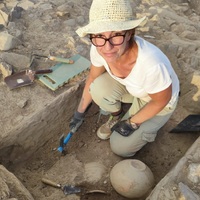





Uploads
Papers by Emmanuelle Meunier
pyrénéen, étendu jusqu’au Priorat vers le sud et jusqu’à la Montagne Noire vers le nord. Nous présentons ici un bilan des connaissances acquises
dans cet espace sur les mines et la métallurgie primaire du 1er Millénaire av. n. è. ainsi que les éléments disponibles pour évaluer l’importance de
ces productions.
Pour le Second âge du Fer, l’ampleur de certains des réseaux miniers montre que la production devait dépasser les besoin locaux. Le mobilier
amphorique témoigne de son insertion dans les réseaux d’échanges régionaux, et ce dès le IIIe siècle av. n. è.
Atualmente sabe-se muito pouco sobre o impacto que a cassiterite (SnO2) ibérica teve na produção de estanho no ocidente europeu durante o período pré-industrial. Neste estudo, pretende-se apresentar um pouco do trabalho preliminar em curso no âmbito do projeto IberianTin, cujo objetivo é aumentar esse conhecimento através do estudo de antigas minas de estanho na Península Ibérica.
Cartagena. Dos tipos de mineralización se han explotado: un filón de galena argentífera y unas estructuras con óxidos de hierro, que
dieron lugar a labores de aspecto muy distinto.
Basándose en los resultados de investigaciones recientes sobre minas antiguas realizadas por nuestro equipo en el Sur de Francia,
este trabajo plantea dos cuestiones principales: la posibilidad del uso del fuego para la extracción de la roca y la dificultad para
identificar fases de explotación que no sean romanas sin el uso de dataciones radiocarbónicas.
The mine of the rambla del Abenque (La Unión) belongs to the Roman mining complex of the Sierra Minera de Cartagena.
Two types of mineralization have been worked out: a silver-lead vein and some structures with iron oxides. They induced some
works with very different aspects.
Upon the base of the results of recent investigations about ancient mines performed by our team in Southern France, this work considers
two main questions: the possibility of using fire to extract the rock and the difficulty to identify other mining phases than the
Roman ones without using radiocarbon dating.
Résumé: Les nouvelles prospections sur le district minier cuprifère du Séronais ont permis de mieux comprendre l’organisation de l’espace en relation avec les mines pour l’époque tardo-républicaine, avec la localisation d’ateliers de traitement du minerai et d’habitats. Mais les datations, réalisées sur des charbons issus des chantiers, ont montré que cette phase avait été précédée par une première exploitation dès les IVe et IIIe s. av. n. è., inconnue jusqu’alors. La reprise médiévale du XIVe s. a également été confirmée. D’autre part, les analyses sur le minerai et les scories permettent de confirmer la production de cuivre de ce district pour l’Antiquité (Ier s. av. n. è.), mais pas de l’argent identifié dans le minerai.
Resumen: Las nuevas prospecciones en el distrito minero cuprífero del Séronais han llevado a un mejor entendimiento de la organización del espacio en relación con la minas del periodo tardo-republicano, con la localización de talleres de tratamiento del mineral y de asentamientos. Pero las dataciones, realizadas sobre carbones procedentes de las labores mineras, han mostrado que ésta fase había sido precedida por una primera explotación ya durante los siglos IV y III aC, desconocida hasta ahora. La reactivación medieval del siglo XIV también se ha confirmado. Por otra parte, los análisis del mineral y de las escorias permiten confirmar la producción de cobre en este distrito para la Antigüedad (s. I aC) pero no de la plata identificada en el mineral.
The northwestern Iberian Peninsula has been well known for its mineral wealth since classical times, including for gold and for tin. In fact, the Iberian tin belt is the largest in western Europe (covering an area of c.200,000 km2), containing tin deposits that were accessible from ancient times. Nevertheless, few archaeological studies have been dedicated to ancient tin mining in the region, unlike gold mining, for which major mining complexes are known from Roman times (e.g. Las Médulas, N Spain, and Três Minas, N Portugal). In this paper, evidence for tin mining in different periods, from Bronze Age to modern times, is discussed, based on selected case-studies, using various approaches developed for the study of ancient and modern tin mining, by members of the present Iberian Tin Research Group. An introduction to the geographical and geological contexts of Iberian tin, and the history of investigation on Iberian tin mining, is included.
Talks by Emmanuelle Meunier
Resumo: O presente trabalho efetua um breve resumo sobre algumas atividades e resultados obtidos no âmbito de dois projetos de investigação, IberianTin e Gold.PT, parcialmente financiados pela Fundação para a Ciência e Tecnologia (FCT-MCTES), que incidem sobre mineração e metalurgia do estanho, bronze, ouro e prata no Oeste Peninsular durante a Proto-história. Foram investigados vários sítios arqueológicos e geológicos do território nacional e galego (Espanha), bem como coleções geológicas e metalúrgicas de vários museus. Foram também consultadas várias bases documentais, entre as quais se destacam os registos mineiros. Os projectos pretendem contribuir para bases mais sólidas sobre os processos metalúrgicos antigos, nomeadamente da Idade do Bronze e da Idade do Ferro, e a sua relação com recursos territoriais e economias antigas.
Abstract : This paper provides a brief summary of some activities and results obtained within the framework of two research projects, IberianTin and Gold.PT, which are partially funded by the Portuguese Foundation for Science and Technology (FCT-MCTES). The projects focus on the mining and metallurgy of tin, bronze, gold, and silver in the Western Iberian Peninsula during Protohistory. Several archaeological and geological sites of the Portuguese and Galician (Spain) territories were investigated, as well as geological and metallurgical collections of several museums. Various documentary bases were also consulted, among which we highlight the mining records. The projects aim to contribute to more solid bases on ancient metallurgical processes, namely during the Bronze Age and the Iron Age, namely establishing relationships with territorial resources and ancient economies
pyrénéen, étendu jusqu’au Priorat vers le sud et jusqu’à la Montagne Noire vers le nord. Nous présentons ici un bilan des connaissances acquises
dans cet espace sur les mines et la métallurgie primaire du 1er Millénaire av. n. è. ainsi que les éléments disponibles pour évaluer l’importance de
ces productions.
Pour le Second âge du Fer, l’ampleur de certains des réseaux miniers montre que la production devait dépasser les besoin locaux. Le mobilier
amphorique témoigne de son insertion dans les réseaux d’échanges régionaux, et ce dès le IIIe siècle av. n. è.
Atualmente sabe-se muito pouco sobre o impacto que a cassiterite (SnO2) ibérica teve na produção de estanho no ocidente europeu durante o período pré-industrial. Neste estudo, pretende-se apresentar um pouco do trabalho preliminar em curso no âmbito do projeto IberianTin, cujo objetivo é aumentar esse conhecimento através do estudo de antigas minas de estanho na Península Ibérica.
Cartagena. Dos tipos de mineralización se han explotado: un filón de galena argentífera y unas estructuras con óxidos de hierro, que
dieron lugar a labores de aspecto muy distinto.
Basándose en los resultados de investigaciones recientes sobre minas antiguas realizadas por nuestro equipo en el Sur de Francia,
este trabajo plantea dos cuestiones principales: la posibilidad del uso del fuego para la extracción de la roca y la dificultad para
identificar fases de explotación que no sean romanas sin el uso de dataciones radiocarbónicas.
The mine of the rambla del Abenque (La Unión) belongs to the Roman mining complex of the Sierra Minera de Cartagena.
Two types of mineralization have been worked out: a silver-lead vein and some structures with iron oxides. They induced some
works with very different aspects.
Upon the base of the results of recent investigations about ancient mines performed by our team in Southern France, this work considers
two main questions: the possibility of using fire to extract the rock and the difficulty to identify other mining phases than the
Roman ones without using radiocarbon dating.
Résumé: Les nouvelles prospections sur le district minier cuprifère du Séronais ont permis de mieux comprendre l’organisation de l’espace en relation avec les mines pour l’époque tardo-républicaine, avec la localisation d’ateliers de traitement du minerai et d’habitats. Mais les datations, réalisées sur des charbons issus des chantiers, ont montré que cette phase avait été précédée par une première exploitation dès les IVe et IIIe s. av. n. è., inconnue jusqu’alors. La reprise médiévale du XIVe s. a également été confirmée. D’autre part, les analyses sur le minerai et les scories permettent de confirmer la production de cuivre de ce district pour l’Antiquité (Ier s. av. n. è.), mais pas de l’argent identifié dans le minerai.
Resumen: Las nuevas prospecciones en el distrito minero cuprífero del Séronais han llevado a un mejor entendimiento de la organización del espacio en relación con la minas del periodo tardo-republicano, con la localización de talleres de tratamiento del mineral y de asentamientos. Pero las dataciones, realizadas sobre carbones procedentes de las labores mineras, han mostrado que ésta fase había sido precedida por una primera explotación ya durante los siglos IV y III aC, desconocida hasta ahora. La reactivación medieval del siglo XIV también se ha confirmado. Por otra parte, los análisis del mineral y de las escorias permiten confirmar la producción de cobre en este distrito para la Antigüedad (s. I aC) pero no de la plata identificada en el mineral.
The northwestern Iberian Peninsula has been well known for its mineral wealth since classical times, including for gold and for tin. In fact, the Iberian tin belt is the largest in western Europe (covering an area of c.200,000 km2), containing tin deposits that were accessible from ancient times. Nevertheless, few archaeological studies have been dedicated to ancient tin mining in the region, unlike gold mining, for which major mining complexes are known from Roman times (e.g. Las Médulas, N Spain, and Três Minas, N Portugal). In this paper, evidence for tin mining in different periods, from Bronze Age to modern times, is discussed, based on selected case-studies, using various approaches developed for the study of ancient and modern tin mining, by members of the present Iberian Tin Research Group. An introduction to the geographical and geological contexts of Iberian tin, and the history of investigation on Iberian tin mining, is included.
Resumo: O presente trabalho efetua um breve resumo sobre algumas atividades e resultados obtidos no âmbito de dois projetos de investigação, IberianTin e Gold.PT, parcialmente financiados pela Fundação para a Ciência e Tecnologia (FCT-MCTES), que incidem sobre mineração e metalurgia do estanho, bronze, ouro e prata no Oeste Peninsular durante a Proto-história. Foram investigados vários sítios arqueológicos e geológicos do território nacional e galego (Espanha), bem como coleções geológicas e metalúrgicas de vários museus. Foram também consultadas várias bases documentais, entre as quais se destacam os registos mineiros. Os projectos pretendem contribuir para bases mais sólidas sobre os processos metalúrgicos antigos, nomeadamente da Idade do Bronze e da Idade do Ferro, e a sua relação com recursos territoriais e economias antigas.
Abstract : This paper provides a brief summary of some activities and results obtained within the framework of two research projects, IberianTin and Gold.PT, which are partially funded by the Portuguese Foundation for Science and Technology (FCT-MCTES). The projects focus on the mining and metallurgy of tin, bronze, gold, and silver in the Western Iberian Peninsula during Protohistory. Several archaeological and geological sites of the Portuguese and Galician (Spain) territories were investigated, as well as geological and metallurgical collections of several museums. Various documentary bases were also consulted, among which we highlight the mining records. The projects aim to contribute to more solid bases on ancient metallurgical processes, namely during the Bronze Age and the Iron Age, namely establishing relationships with territorial resources and ancient economies
Mining activity, which is dependent on the location of mineral resources, is in fact rooted in the structuring of the territory. This implies the establishment of nearby habitats for the miners and workshops to produce metal from the ore. All these elements structure the landscape and leave a lasting imprint (Stöllner 2003, p. 429-431), identifiable by remote sensing, survey and GIS spatial analysis.
Here, we present the first results of an ongoing research to locate and study protohistoric tin mines in the north-western Iberian Peninsula. The cross-referencing of mining data with Iron Age settlements makes it possible to delimit areas where mining may have taken place before the Roman conquest. However, the diachronic nature of many of these mines does not allow them to be directly associated with the settlements. We will therefore focus the presentation on the methodology used to reconstruct the phases of alluvial tin mining, using airborne LiDAR data and/or historic aerial imagery. These geographical datasets allow us to select the locations for future excavations in order to date the oldest parts of the mines.
This research is part of the project IberianTin (PTDC/HAR-ARQ/32290/2017), funded by FEDER through the COMPETE 2020 Programme and National Funds through FCT (Fundação para a Ciência e Tecnologia). We also acknowledge the Cenimat/i3N through the project UID/CTM/50025/2019 funded by FCT/MCTES and the ICT through the project COMPETE 2020 (UID/GEO/04683/2013) with reference POCI-01-0145-FEDER-007690.
O projeto IberianTin (PTDC/HAR-ARQ/32290/2017) tem o objetivo de contribuir para a caracterização da produção antiga de estanho no Noroeste Ibérico, partindo de uma perspetiva interdisciplinar e de casos de estudo. As escórias de estanho do Castro de Carvalhelhos (Vila Real, Trás-os-Montes) constituem um primeiro caso de estudo, onde se mostrou a produção de estanho metálico entre o séc. II a.C. e I d.C., se efetuou a contextualização do castro com os recursos mineiros locais, e se comparou a composição elementar e microestrutural das escórias com a dos minérios locais.
Agora, para além deste primeiro caso de estudo, apresentamos avanços recentes do projeto IberianTin, como os obtidos para a região da Serra de Arga (Viana do Castelo, Portugal) e de Baltar (sul da província de Ourense, Espanha). Com estes novos dados, pretende-se avançar de forma integrada no conhecimento das formas de exploração antigas do estanho pelas sociedades do Noroeste Peninsular, contribuindo para a avaliação do papel que a região pode ter tido no abastecimento e circulação de matéria-prima de estanho em tempos antigos.
The sources of antique tin are known in broad lines (European Occident) but precise elements about the mines which were actually exploited during Roman period are very scarce. The site of Vale do Mouro gives us an opportunity to bring data about tin procurement and about the way this production was integrated within the villa’s economy.
In this area, apart from the main communication axes, it does not seem that the roman presence could have been very strong during the Ist c. BC. Furthermore, the way of mining does not show major changes between the IVth-IIIrd c. and the Ist c. This make plausible that the descendants of the first miners went back to the mines on their own. The role of Roma, in this context, would have been to stimulate the demand for metals, allowing these small exploitations to work with a relative autonomy. However, the interruption of mining at the beginning of the Ist c. AD could be related with a political decision. Indeed, a new stage of activity recorded in two of these mines in the XIVth c. AD refutes a general exhaustion of the mineral deposits.
Pourtant, la façon dont une exploitation minière est conduite reflète de nombreux aspects qui définissent une société. En effet, cette activité, collective s’il en est, dépend à la fois des conditions naturelles locales, des connaissances techniques disponibles et du contexte socio-économique dans lequel elle prend place. Sa mise en œuvre constitue ainsi une synthèse entre les possibilités offertes par l’environnement, les moyens accessibles pour en profiter et les investissements effectivement consentis par le groupe concerné, synthèse continuellement remise en question par l’équilibre fragile entre ces trois domaines.
Les résultats obtenus ces dix dernières années sur des mines du second âge du Fer entre Pyrénées et sud du Massif Central ont commencé à combler les lacunes pour le Sud-Ouest de la Gaule. Ces nouvelles données ont renouvelé la perception de l’exploitation minière gauloise régionale et ouvrent des perspectives de recherche qui dépassent le cadre strict de la spécialité. Le district à cuivre argentifère du Massif de l'Arize est l'une des zones exploitées dès les IVe-IIIe s. av. J.-C. Les données obtenues ces dernières années indiquent une exploration systématique des ressources minières et une exploitation relativement intensive du secteur. Cela implique la mise en place d'une organisation sociale et politique qui permet de gérer les relations entre mineurs, métallurgistes et agriculteurs-éleveurs, ainsi que d'assurer des débouchés pour la production métallique, tout en contrôlant les retombées de cette production (captation des bénéfices par une minorité et/ou redistribution au sein de la communauté minière).
Pour préciser le contexte socio-politique de ces exploitations, des projets collectifs et pluridisciplinaires seraient nécessaires.
La base de datos completa del catálogo de sítios con sus respectivas referencias bibliográficas se pueden descargar como anexo a esta dirección: https://hal.archives-ouvertes.fr/hal-02871961
---
The link between tin mining and water, and its expression in the landscape, has been a research path unexplored in the peninsular context. Despite the constant attribution of a stanniferous wealth to the northwestern Iberia and the recognition of the exploitation of these resources since antiquity, attempts to characterize this potential has been very uneven. While some approaches for the characterization of tin ore deposits and possible ancient underground mining works or washing tailings from these mining sites are known, possible indications of tillage of resources through techniques involving use of water currents and settling (stream-works) has not been studied. This paper presents the potential of research on water landscapes associated with tin exploitation by applying a set of methodologies and their possible connection with the settlement of the territory from the late prehistory, and the origin of bronze metallurgy and social development of these Iberian communities throughout history. At the same time we present these resources as potential elements for joint cross-border cultural itineraries and interactions, as well as for sustainable development in rural areas.